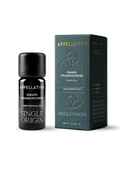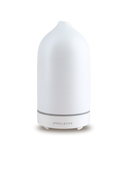For many people taking GLP‑1s like Ozempic, Wegovy, or Mounjaro, the changes are striking – a reduced appetite, weight loss, smaller meals. But quietly – and unexpectedly – another side effect is unfolding: an altered sense of smell
For some, it's hyperosmia: a heightened sensitivity where even the faintest aroma becomes overwhelming. For others, it’s more elusive – a quiet distortion, where once-loved scents now feel off, unfamiliar, or oddly intense.
Across weight-loss forums and Reddit threads, a pattern is emerging: familiar scents are suddenly repulsive, others strangely compelling. The smell of baking bread, once warm and reassuring, now registers as sickly. A favourite perfume may seem too sweet. Even coffee – rich and grounding – can provoke an unexpected wave of nausea.
This shift has even earned a name: the "Ozempic smell" phenomenon – a term gaining traction to describe the growing number of users who find themselves repelled by everyday scents or drawn, unexpectedly, to dessert-like, nostalgic aromas.
Reddit forums reveal just how dramatically everyday smells can shift – from hand soap to perfume – in the wake of starting Ozempic and other GLP‑1 agonists
There’s no universal experience – some GLP-1 users notice no change at all. Others say they become scent-sensitive only during specific periods, such as dose escalations or post-injection windows.
So, what’s really going on?
How GLP-1s Influence What You Smell
GLP‑1 agonists were originally designed to regulate blood sugar and appetite in people with type 2 diabetes. They work by mimicking a naturally occurring hormone in the gut – glucagon-like peptide-1 – which plays a key role in satiety and digestion.
But the GLP‑1 hormone doesn’t just work locally in the gut. It communicates with the brain, too – particularly regions also responsible for processing smell.
The GLP‑1 hormone doesn’t just work locally in the gut. It communicates with the brain, too – particularly regions also responsible for processing smell
When scent molecules bind to receptors in the nose, they send electrical signals to the olfactory bulb, which in turn relays information to the brain. This is how we distinguish the scent of lemon from rosemary, or clean linen from smoke. But this process is not purely mechanical – smell is deeply intertwined with memory and mood.
GLP‑1s influence that entire network. And this might explain why so many users are noticing unexpected changes in how they experience scent.
GLP‑1s influence the olfactory network, the area of the brain that processes smell, emotional regulation, memory and mood
5 Reasons Why Your Sense of Smell Might Be Changing on GLP‑1s
While clinical research is still catching up, several compelling theories are beginning to explain why scent perception may shift for people using GLP‑1s.
1. Sensory Aversion
Nausea is one of the most frequently reported side effects of GLP‑1s, especially during dose increases. When that queasiness overlaps with exposure to a specific scent – a candle, body lotion, or even a freshly cleaned kitchen – the brain may begin to associate that smell with feeling unwell. It's a phenomenon well documented in pregnancy and chemotherapy, and it may be unfolding in a similar way here.
2. Vagus Nerve Activation
GLP‑1s stimulate the vagus nerve – a key communication pathway between the gut and brain. This same nerve is involved in how we process both taste and smell. If overstimulated, it could increase sensitivity to sensory input, making once-subtle scents feel overwhelming or even nauseating.
3. Disrupted Scent Memory
Our reactions to scent are deeply rooted in memory. If a previously beloved scent coincides with several days of feeling unwell, the brain may rewrite that association. The result? A fragrance or flavour that once brought comfort may suddenly become off-putting – even long after the nausea has passed.
4. Heightened Sensory Perception
Some users describe smells becoming sharper, stronger, or more vivid. This may be due to a temporary shift in sensory thresholds – much like how flavours can feel more intense after fasting. While some find this new olfactory clarity enjoyable, others report feeling easily overstimulated.
5. Substituting Cravings
Interestingly, many users report a growing attraction to sweet-smelling products – vanilla, coconut, caramel – after starting GLP‑1s. One theory suggests that when sugar cravings fade, the brain may seek out scent-based “pleasure signals” as a substitute. In this way, indulgent-smelling products might offer a non-caloric form of comfort or reward.
Some people taking GLP-1s describe smells becoming sharper, stronger, or more vivid
Everyday Tips for Living with a Changing Sense of Smell
If you're taking a GLP‑1 medication and find yourself reacting differently to smells, you're not alone. Here are a few things to keep in mind:
It won’t last forever. Your sensory experience may change over time. Something that smells overpowering now may change as your body adjusts. Many report their symptoms going back to normal after 6-12 weeks.
Mild sensory aversions are common. If a scent becomes associated with nausea, consider pausing exposure and reintroducing it gently later.
If heightened smell is causing discomfort, hydration and fresh air can help. Avoid environments with heavy synthetic fragrances when possible.
Opt for lighter, neutral home scents, unscented body care, or explore essential oils with calming profiles – citrus tends to be one of the least complained about, while invigorating scents containing peppermint are ideal for quelling nausea.
The Need for More Research in the GLP‑1 Era
Despite growing anecdotal reports, the sensory-related side effects of GLP‑1s remain largely under-researched.
One 2024 study at the Smell and Taste Center at the University of Pennsylvania (source) found evidence of GLP‑1 agonists “significantly depressing the perception of all five basic taste qualities.”
Interestingly, while all participants in the study experienced a slight decline in their sense of smell, it was not considered statistically significant – suggesting that olfactory changes may be more individualised, or more complex to detect in standardised tests.
So far, there aren’t any other clinical trials that are focused solely on olfactory outcomes, but as we saw with Covid-related anosmia, the sheer volume of reported experiences point to the need for further research.
What we do know is this: our sense of smell is not fixed. It shifts with biology, behaviour, memory and mood, as well as the chemicals we introduce into our system. The intersection of hormones, scent and brain chemistry remains one of the more mysterious frontiers of health science. GLP‑1s may be revealing just how dynamic – and deeply personal – that sensory landscape really is.
And while that might mean (temporarily) retiring a favourite hand cream or tweaking your grocery list, it’s yet another reminder to appreciate our sense of smell – an invisible but powerful part of everyday life.










GLP-1s and Your Sense of Smell – How Weight-Loss Drugs May Be Changing Your Senses
For many people taking GLP‑1s like Ozempic, Wegovy, or Mounjaro, the changes are striking – a reduced appetite, weight loss, smaller meals. But quietly – and unexpectedly – another side effect is unfolding: an altered sense of smell
For some, it's hyperosmia: a heightened sensitivity where even the faintest aroma becomes overwhelming. For others, it’s more elusive – a quiet distortion, where once-loved scents now feel off, unfamiliar, or oddly intense.
Across weight-loss forums and Reddit threads, a pattern is emerging: familiar scents are suddenly repulsive, others strangely compelling. The smell of baking bread, once warm and reassuring, now registers as sickly. A favourite perfume may seem too sweet. Even coffee – rich and grounding – can provoke an unexpected wave of nausea.
This shift has even earned a name: the "Ozempic smell" phenomenon – a term gaining traction to describe the growing number of users who find themselves repelled by everyday scents or drawn, unexpectedly, to dessert-like, nostalgic aromas.
Reddit forums reveal just how dramatically everyday smells can shift – from hand soap to perfume – in the wake of starting Ozempic and other GLP‑1 agonists
There’s no universal experience – some GLP-1 users notice no change at all. Others say they become scent-sensitive only during specific periods, such as dose escalations or post-injection windows.
So, what’s really going on?
How GLP-1s Influence What You Smell
GLP‑1 agonists were originally designed to regulate blood sugar and appetite in people with type 2 diabetes. They work by mimicking a naturally occurring hormone in the gut – glucagon-like peptide-1 – which plays a key role in satiety and digestion.
But the GLP‑1 hormone doesn’t just work locally in the gut. It communicates with the brain, too – particularly regions also responsible for processing smell.
The GLP‑1 hormone doesn’t just work locally in the gut. It communicates with the brain, too – particularly regions also responsible for processing smell
When scent molecules bind to receptors in the nose, they send electrical signals to the olfactory bulb, which in turn relays information to the brain. This is how we distinguish the scent of lemon from rosemary, or clean linen from smoke. But this process is not purely mechanical – smell is deeply intertwined with memory and mood.
GLP‑1s influence that entire network. And this might explain why so many users are noticing unexpected changes in how they experience scent.
GLP‑1s influence the olfactory network, the area of the brain that processes smell, emotional regulation, memory and mood
5 Reasons Why Your Sense of Smell Might Be Changing on GLP‑1s
While clinical research is still catching up, several compelling theories are beginning to explain why scent perception may shift for people using GLP‑1s.
1. Sensory Aversion
Nausea is one of the most frequently reported side effects of GLP‑1s, especially during dose increases. When that queasiness overlaps with exposure to a specific scent – a candle, body lotion, or even a freshly cleaned kitchen – the brain may begin to associate that smell with feeling unwell. It's a phenomenon well documented in pregnancy and chemotherapy, and it may be unfolding in a similar way here.
2. Vagus Nerve Activation
GLP‑1s stimulate the vagus nerve – a key communication pathway between the gut and brain. This same nerve is involved in how we process both taste and smell. If overstimulated, it could increase sensitivity to sensory input, making once-subtle scents feel overwhelming or even nauseating.
3. Disrupted Scent Memory
Our reactions to scent are deeply rooted in memory. If a previously beloved scent coincides with several days of feeling unwell, the brain may rewrite that association. The result? A fragrance or flavour that once brought comfort may suddenly become off-putting – even long after the nausea has passed.
4. Heightened Sensory Perception
Some users describe smells becoming sharper, stronger, or more vivid. This may be due to a temporary shift in sensory thresholds – much like how flavours can feel more intense after fasting. While some find this new olfactory clarity enjoyable, others report feeling easily overstimulated.
5. Substituting Cravings
Interestingly, many users report a growing attraction to sweet-smelling products – vanilla, coconut, caramel – after starting GLP‑1s. One theory suggests that when sugar cravings fade, the brain may seek out scent-based “pleasure signals” as a substitute. In this way, indulgent-smelling products might offer a non-caloric form of comfort or reward.
Some people taking GLP-1s describe smells becoming sharper, stronger, or more vivid
Everyday Tips for Living with a Changing Sense of Smell
If you're taking a GLP‑1 medication and find yourself reacting differently to smells, you're not alone. Here are a few things to keep in mind:
It won’t last forever. Your sensory experience may change over time. Something that smells overpowering now may change as your body adjusts. Many report their symptoms going back to normal after 6-12 weeks.
Mild sensory aversions are common. If a scent becomes associated with nausea, consider pausing exposure and reintroducing it gently later.
If heightened smell is causing discomfort, hydration and fresh air can help. Avoid environments with heavy synthetic fragrances when possible.
Opt for lighter, neutral home scents, unscented body care, or explore essential oils with calming profiles – citrus tends to be one of the least complained about, while invigorating scents containing peppermint are ideal for quelling nausea.
The Need for More Research in the GLP‑1 Era
Despite growing anecdotal reports, the sensory-related side effects of GLP‑1s remain largely under-researched.
One 2024 study at the Smell and Taste Center at the University of Pennsylvania (source) found evidence of GLP‑1 agonists “significantly depressing the perception of all five basic taste qualities.”
Interestingly, while all participants in the study experienced a slight decline in their sense of smell, it was not considered statistically significant – suggesting that olfactory changes may be more individualised, or more complex to detect in standardised tests.
So far, there aren’t any other clinical trials that are focused solely on olfactory outcomes, but as we saw with Covid-related anosmia, the sheer volume of reported experiences point to the need for further research.
What we do know is this: our sense of smell is not fixed. It shifts with biology, behaviour, memory and mood, as well as the chemicals we introduce into our system. The intersection of hormones, scent and brain chemistry remains one of the more mysterious frontiers of health science. GLP‑1s may be revealing just how dynamic – and deeply personal – that sensory landscape really is.
And while that might mean (temporarily) retiring a favourite hand cream or tweaking your grocery list, it’s yet another reminder to appreciate our sense of smell – an invisible but powerful part of everyday life.